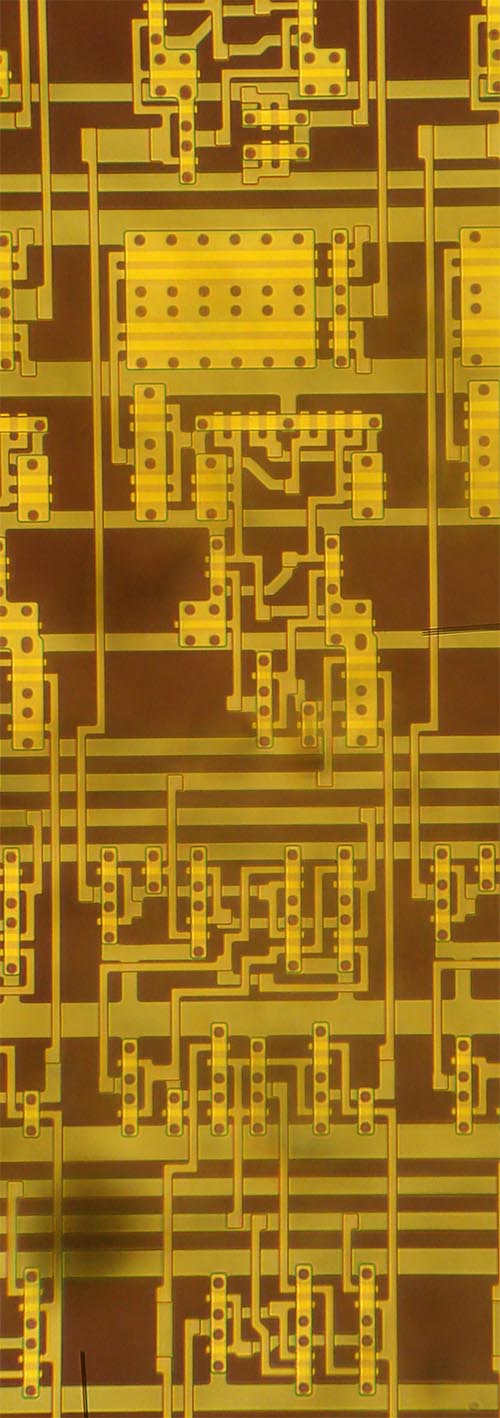Indeed, the ware for Name that Ware October 2006 is a Chumby LCD panel. It is made by Data Image. I had a broken one laying around and since it was already busted I figured why not take it apart and look at it under the microscope? I’ll have to declare Cathedrow as the winner this time; Gumbydamnit had a good answer first, but Cathedrow actually guessed it to be a Chumby LCD, and as usual, I give prizes to those with more detailed answers (yeah, I was that TA who would only give partial credit on test answers that were correct but showed no work–sorry…). Drop me an email to claim your prize!
A little more on the display–indeed the test structures shown are for verifying the yield and device properties of the various layers involved in LCD manufacture: ITO is Indium Tin Oxide, a transparent conductor used commonly in LCDs; this particular display also features chromium conductors, as evidenced by the via chains in the lower right hand corner, and a silicon TFT device, in the lower left. There is also a silicon TFT resistor in the top-center.
The color gels used to implement the display are very vivid, although there are not many transistors in the display itself; there is perhaps a single transistor per row and column to drive the lines, and a single transistor at each pixel. Two helper chips are bonded onto the glass to help create a manageable interface to the host device.
An interesting comparison is the display of the Zune. I also took apart the Zune display after I tore it apart. Below are some photos of what’s inside it. It actually embeds all of the driver and decoder circuitry on the glass using polysilicon TFT devices; if I am not mistaken, these devices are deposited as amorphous silicon and then laser-annealed to form devices of sufficient performance to build logic, as evidenced by the very logic-looking transistor structures in the photos below. The color gels on the Zune display look faded, but I think that is because of some of the contrast-enhancement coatings applied to the display that aren’t present on the Chumby display. Despite the presence of the more sophisticated logic on the glass, one decoder chip was still required to complete the host interface.

![]()
